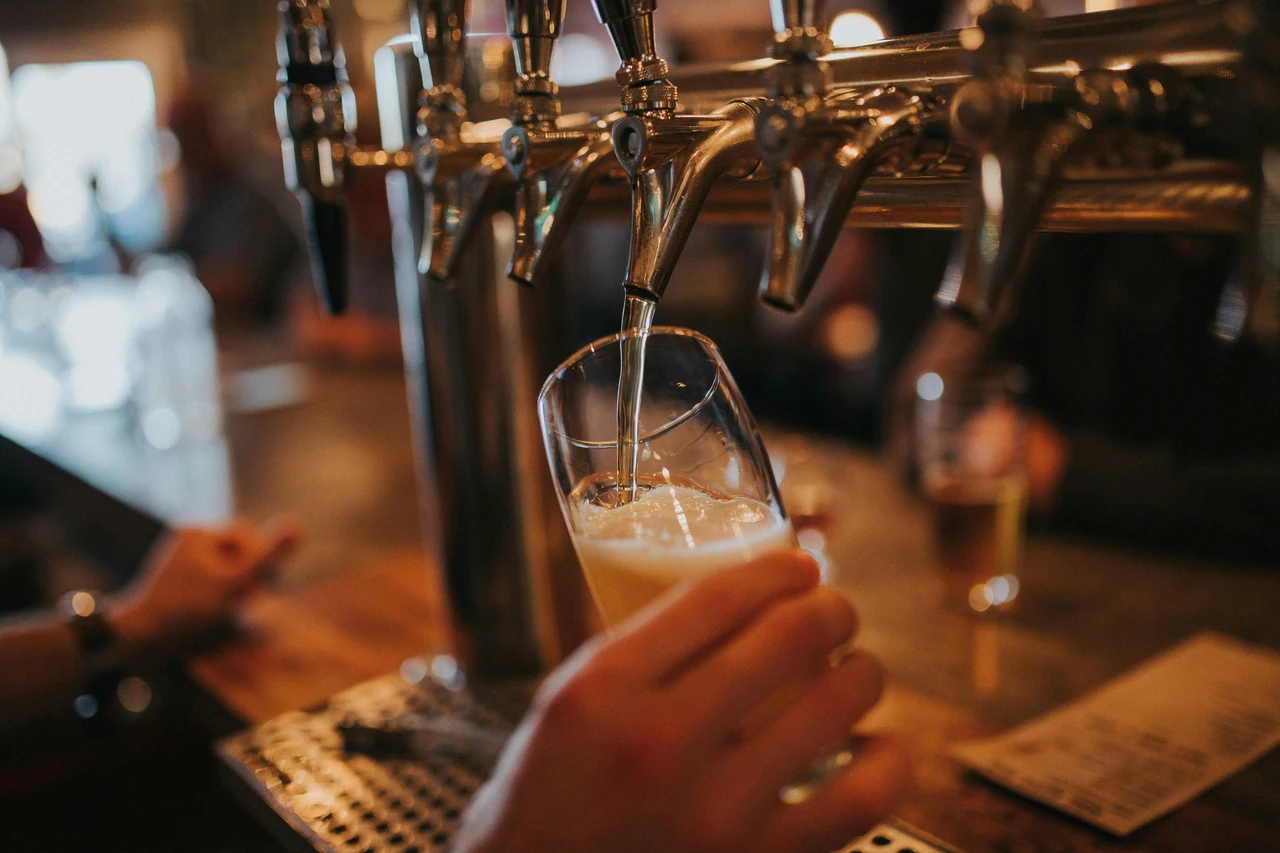Why Beer on Tap Just Hits Different
Hey there, beer lovers! Jeff here, and today we're diving into one of those debates that's been floating around taprooms and backyard barbecues for decades: does beer really taste better on tap? Spoiler alert – it absolutely does, and I'm about to break down exactly why your favorite brew reaches its full potential when it's flowing from those beautiful taps behind the bar.
Now, I've spent more years than I care to count exploring every corner of the beer world, from cramped basement breweries to sprawling beer halls, and let me tell you something – there's a reason why seasoned beer drinkers always gravitate toward the tap handles. It's not just about the experience (though pulling a perfect pint is pretty satisfying), it's about the fundamental differences in how that liquid gold reaches your glass.
The Freshness Factor: Why Newer is Always Better
Let's start with the most obvious advantage – freshness. When you're drinking beer on tap, you're getting it as close to the source as possible. Most draft beer travels from the brewery to the bar in kegs that are consumed within weeks, not months. Compare that to bottled or canned beer, which might sit on shelves, in warehouses, or on delivery trucks for months before making it to your local store, then potentially sitting there even longer before you finally crack it open.
Beer is a living product, and time is not its friend. The longer beer sits around, the more its flavors start to fade and change. Those bright hop notes that make your IPA sing? They're volatile compounds that break down over time. The subtle malt sweetness in your favorite porter? It can develop off-flavors when exposed to light and temperature fluctuations for extended periods.
Draft beer sidesteps most of these issues because of its rapid turnover. Popular bars and breweries are constantly rotating their kegs, meaning you're getting beer that was probably packaged within the last few weeks, not months. That translates directly to more vibrant flavors, better aromatics, and an overall drinking experience that's closer to what the brewer intended.
The Light Problem: UV Rays Are Beer's Enemy
Here's something that might surprise casual beer drinkers – light is one of beer's biggest enemies. UV rays break down hop compounds and create what we call "skunky" flavors. You know that distinctive smell you sometimes get from certain beers, especially ones in clear or green bottles? That's light damage, and it's not supposed to be there.
Draft beer lives its entire life in darkness. From the keg to the tap lines to your glass, it never sees direct sunlight or fluorescent lighting. This protection maintains the beer's intended flavor profile and prevents those unpleasant off-flavors that can develop in bottles and cans exposed to light during storage, transport, or display.
Even brown bottles, which offer better protection than clear or green glass, can't completely shield beer from light damage over extended periods. Cans do better in this regard, but they introduce their own set of potential issues that we'll get into shortly.
Temperature Control: The Goldilocks Zone
Temperature consistency is another major factor where draft beer shines. Professional establishments maintain their draft systems at optimal temperatures, usually between 36-38°F for most beer styles. This isn't just about serving beer cold – it's about maintaining the ideal temperature from keg to glass.
When beer experiences temperature fluctuations, it can affect carbonation levels, flavor development, and overall quality. Bottled and canned beer often experiences significant temperature swings during distribution and storage. It might freeze in a delivery truck during winter, then sit in a hot warehouse, then get refrigerated at the store, then warm up again in your car on the way home.
Draft systems eliminate most of these variables. The beer stays at a consistent temperature from the moment it leaves the brewery until it hits your glass. This stability helps preserve carbonation levels, maintains flavor integrity, and ensures that every pint tastes the way it should.
The Carbonation Advantage
Speaking of carbonation, draft beer has a significant advantage here too. The CO2 levels in draft beer are more stable and consistent than in packaged beer. In bottles and cans, carbonation can vary based on temperature fluctuations, age, and even altitude changes during transport.
Draft systems use mixed gas (usually CO2 and nitrogen) to push beer from keg to tap, and this system allows for precise control over carbonation levels. Brewers can dial in the exact amount of CO2 for each beer style, ensuring that your light lager has the bright, crisp carbonation it needs while your imperial stout maintains the smoother, lower carbonation that complements its rich flavors.
This controlled carbonation also affects mouthfeel and flavor perception. Proper carbonation enhances aroma release, affects how flavors hit your palate, and contributes to the overall drinking experience in ways that many people don't consciously notice but definitely feel.
The Container Conundrum
Let's talk about what beer touches before it reaches your mouth. In bottles, that's glass, which is generally neutral and doesn't impart flavors. Cans use a polymer lining that, while improved significantly over the years, can still interact with beer in subtle ways, especially over time or under certain storage conditions.
Draft beer flows through stainless steel and food-grade tubing – materials specifically chosen for their neutrality and cleanliness. There's no polymer lining to worry about, no potential for metallic flavors, and no concern about the container affecting the beer's taste profile.
Additionally, the packaging process itself is gentler for draft beer. Bottling and canning involve more mechanical handling, higher pressures, and more opportunities for oxidation. Kegging is typically a gentler process that minimizes the beer's exposure to oxygen, helping preserve its intended flavors.
The Oxidation Factor
Oxygen is another major enemy of beer quality. Once beer is exposed to oxygen, it begins to deteriorate. The flavors become muted, off-flavors develop, and the beer loses its vitality. This process happens gradually but inevitably.
Bottled and canned beer, despite modern packaging techniques, still contains some dissolved oxygen from the packaging process. Over time, this oxygen continues to interact with the beer, slowly degrading its quality. Draft beer, particularly when handled properly, has minimal oxygen exposure throughout its journey from brewery to glass.
Modern draft systems use CO2 or mixed gas to push beer through the lines, creating a completely oxygen-free environment. When properly maintained, a draft system can deliver beer with significantly lower oxygen levels than packaged alternatives, resulting in fresher, more vibrant flavors.
The Human Element: Expertise Matters
Here's something that's often overlooked – the human expertise involved in serving draft beer. A good bartender or taproom staff member understands how to pour a proper beer, how to maintain clean lines, and how to rotate stock to ensure freshness. They're trained to recognize when something's off and take action to fix it.
When you buy packaged beer, you're on your own. You don't know how it's been stored, how old it is, or whether it's been handled properly. With draft beer, you've got knowledgeable professionals making sure you get the best possible product.
The Ritual and Experience
Beyond the technical advantages, there's something to be said for the ritual and experience of draft beer. Watching a skilled bartender work the taps, seeing that perfect head form as beer fills your glass, hearing the subtle sounds of a well-maintained draft system – it all contributes to the anticipation and enjoyment of the beer.
This isn't just psychological fluff. The way beer is presented affects how we perceive its taste. A properly poured draft beer with the right amount of head releases more aromatics, which significantly impact flavor perception. That perfect pour isn't just for show – it's actually enhancing your tasting experience.
When Draft Goes Wrong
Now, I'd be doing you a disservice if I didn't acknowledge that draft beer isn't automatically better. Poor maintenance, dirty lines, improper temperatures, or slow turnover can make draft beer significantly worse than its packaged counterparts. But when draft systems are properly maintained – which they are at any reputable establishment – the advantages are undeniable.
The key is knowing where to drink. Established breweries, busy beer bars, and places with knowledgeable staff are safe bets. If you're somewhere that beer sits in lines for weeks or cleaning schedules are inconsistent, you might be better off with a bottle.
The Bottom Line
At the end of the day, beer on tap tastes better because it's fresher, better protected from light and oxygen, temperature controlled, properly carbonated, and served by people who understand beer. It's the culmination of everything working together to deliver beer as close to the brewer's vision as possible.
The next time you're deciding between that bottle and the tap handle, remember that you're not just choosing a different container – you're choosing a completely different beer experience. And trust me, once you start paying attention to these differences, you'll never look at beer the same way again.
So raise your glass (preferably one filled from a tap), and here's to better beer through better understanding. Cheers!

